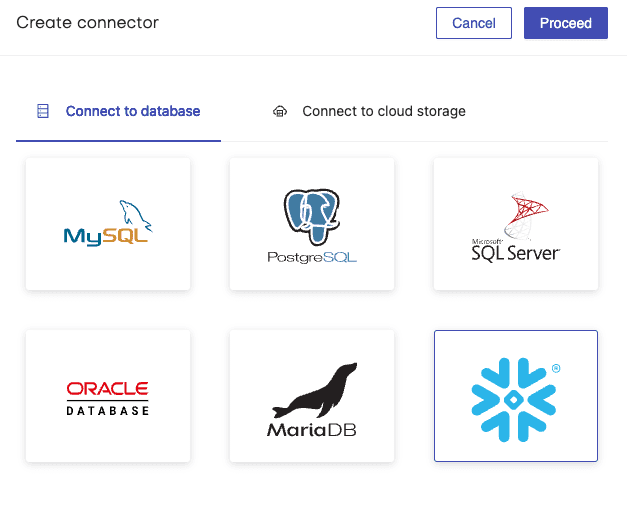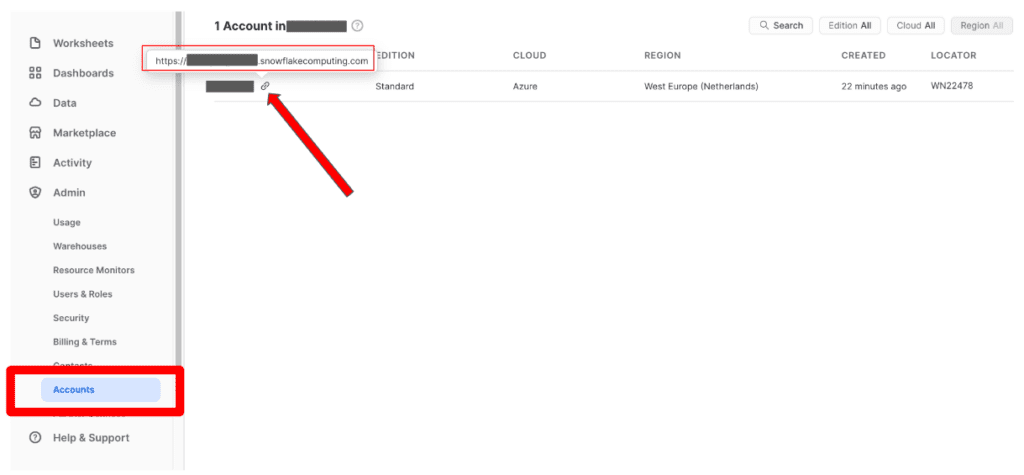Introduction
Snowflake, a robust cloud-based data warehousing platform, has gained significant popularity for its ability to handle large volumes of structured and semi-structured data while delivering exceptional performance and flexibility.
From startups to enterprise-level organizations, the demand for data-driven insights continues to grow. However, traditional on-premises data warehouses often fall short of meeting the scalability and performance requirements of modern applications. This is where Snowflake shines. By leveraging the power of cloud computing and a unique architecture, Snowflake offers a compelling solution for storing, processing, and analyzing vast amounts of data with unparalleled ease.
Snowflake is a fantastic productivity booster. It decreases the time to value, and ensures that everyone has equitable access to performance. Synthetic Data serves a similar role. As a result, Snowflake is being offered as MOSTLY AI's new DB Connector.
Exploring the key features and benefits of a Snowflake integration
Snowflake has a variety of features that make it an attractive option for enterprises looking for an effective and scalable data warehousing solution. Here are some of the key features and benefits of Snowflake:
Scalability
Snowflake's cloud-based design enables you to scale up or down your data warehouse resources based on your individual requirements. This flexibility guarantees that you have the computational capacity you need to manage rising data volumes and concurrent user requests without sacrificing speed.
Performance
The unique Snowflake design separates computing and storage, enabling massively parallel processing and query optimization. Even when dealing with complicated analytical workloads, this leads to fast and efficient data retrieval.
Flexibility
Snowflake supports both structured and semi-structured data, allowing you to store and analyze a wide range of data formats from relational databases to JSON, XML, and others. This adaptability enables you to gain significant insights from a variety of data sources.
Data sharing
Snowflake's data-sharing features are powerful, allowing you to securely exchange data sets and interact with external partners, clients, or different departments within the organization. This allows data-driven decision-making and encourages a collaborative atmosphere.
Snowflake's architecture and cloud-based approach
Snowflake's architecture is based on a cloud-native foundation, allowing for easy connection with a variety of cloud platforms. The key components of Snowflake's architecture include:
Cloud storage
Snowflake uses cloud object storage for robust and highly accessible data storage, such as Amazon S3, Google Cloud Storage, or Microsoft Azure Blob Storage. This distinction between storage and computation enables effective data storage and retrieval.
Virtual data warehouse (VDW)
The VDW in Snowflake is the computational layer that handles query execution and processing. You may set up numerous virtual warehouses to serve various workloads at the same time, each with its own set of computational resources.
Metadata service
Snowflake's metadata service maintains metadata about your data, including schema information, table structures, and access restrictions. This unified metadata store guarantees uniform data governance while also allowing for efficient query optimization.
Query processing engine
Snowflake's query processing engine is designed to optimize performance and scalability. It scales computing resources dynamically in order to process queries in parallel, resulting in quicker query execution times and more effective resource use.
MOSTLY AI's Snowflake integration
Although Snowflake and MOSTLY AI operate in separate sectors of the data and analytics domain, we have many similarities. MOSTLY AI's Snowflake integration was a logical step on our product journey, looking to increase data consumption downstream.
Data privacy and security
Both Snowflake and MOSTLY AI prioritize data privacy and security. Snowflake provides robust data security features, including encryption, access controls, and compliance certifications. MOSTLY AI's synthetic data generation techniques focus on preserving privacy by generating data that cannot be reverse-engineered to identify individuals. As a result, organizations could leverage Snowflake's secure data infrastructure to store and process synthetic data generated by MOSTLY AI.
Data analytics and AI
Snowflake's data warehousing platform enables organizations to perform advanced analytics and derive insights from their data. Synthetic data generated by MOSTLY AI can be used as a privacy-preserving alternative for sensitive or personally identifiable data during analytics or AI model training. This combination could enhance data analysis and ML model training capabilities while maintaining privacy and compliance.
Productivity booster and breaking data silos
Data silos are often required by law, and certain data assets cannot be connected for compliance reasons. This is where MOSTLY AI’s capabilities come in handy. The synthetic versions of those datasets may work as alternatives and can serve as the sole choice for data collaboration. Combining those with a data warehouse solution like Snowflake is a must. As explained above, Snowflake's cloud-based architecture and data-sharing features contribute to increased productivity for data teams and organizations.
What’s in it for you?
The power of synthetic data: the game-changing Snowflake integration
MOSTLY AI's Snowflake integration is a significant milestone that opens up new opportunities for enterprises. It blends MOSTLY AI's superior AI technology with Snowflake's data warehousing solution's powerful features. This integration enables companies to exploit synthetic data while preserving the statistical features of the original data and ensuring data privacy.
Seamless integration for easy adoption
The ease of adoption of any technological solution is critical, and a Snowflake integration provides a smooth experience. Businesses may produce synthetic data straight from their Snowflake databases, avoiding complicated data transfers and duplicating critical information. This interface improves productivity, saves time, and allows enterprises to make the most of their Snowflake information while maintaining privacy.
Embracing the future of data-driven innovation
In a data-driven world, the capacity to successfully exploit data while protecting privacy drives innovation. MOSTLY AI's Snowflake integration offers a huge step forward in attaining this balance. Organizations can now use the power of synthetic data created straight from Snowflake databases to unleash new levels of creativity while adhering to the strictest data protection rules.
How to connect to your Snowflake account through MOSTLY AI
Step 1
From within the MOSTLY AI app, direct to the Connectors tab and click on the ‘Create connector’ button.
Step 2
Select the Snowflake icon and click proceed.

Step 3
Fill out the form that appeared in the drawer with your account details and the database you would like to connect. Copy and paste the Account URL from your Snowflake account into the ‘Account’ field.

Step 4
Click on ‘Test connection’ to check whether we are able to connect with your Snowflake database and then ‘Save’ to save your Snowflake data connector.
Step 5
Create a new data catalog using your newly created Snowflake data connector and enjoy MOSTLY AI’s features.
For more in-depth documentation, please view our guide on connecting to Snowflake.
Snowflake integration for smooth data consumption
Snowflake is a great productivity booster. If combined for storing MOSTLY AI’s synthetic datasets it unlocks a vast amount of benefits and potential collaboration between departments within and outside an organization. It will also assist data owners who wish to increase collaboration and data-sharing by lowering time-to-data and governance costs, allowing innovation, democratizing data, and promoting data literacy.
We at MOSTLY AI are excited about the potential that Snowflake as our new database connector has to offer to our customers. We are eager to explore this path further with our customers to assist their journey towards data innovation, at a fraction of the time and expense, since the explorations in this blog post have shown the potential to support such a scenario.
As always we are more than happy to introduce you to our platform. If you are as excited as we are to use our new features do not hesitate to contact us and make the change for your organization and start working on your Snowflake integration today.



